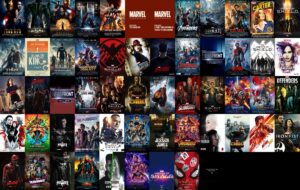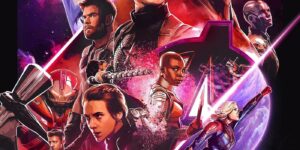Behind the Marvel Magic: Unraveling the Secrets of Cinematic Storytelling

- Everything We Know About Upcoming MCU Releases
- Get Ready For A New Era: The Marvel Cinematic Universe Is About To Get A Whole Lot Bigger
- MCU’s Latest Release – Unraveling The Intricate Web Of Connection
- How Marvel Continues To Innovate With Every Movie Release
- À la recherche de « l’ange » qui m’a retenu sur le pont de Westminster
In a world where superheroes and epic battles have become the norm, Marvel’s latest movie is a testament to the ever-evolving art of visual effects. As we delve into the visual masterpiece that has captivated audiences worldwide, it’s hard not to wonder – what exactly goes on behind the scenes of creating these cinematic spectacles? Let’s take a step into the fascinating realm of visual effects and explore the magic that brings Marvel’s latest movie to life.
At the heart of every Marvel movie lies a complex web of creative collaboration. Visual effects studios, special effects teams, and production designers work in tandem to craft a universe that’s both visually stunning and coherent. One of the most significant challenges faced by these teams is striking a balance between creative vision and technical feasibility.
"We want to push the boundaries of what’s possible while ensuring that the visual effects serve the story, not the other way around," says Joe Letteri, a renowned visual effects supervisor. "The key is to understand the director’s vision and translate it into a visual language that enhances the narrative."
To achieve this delicate balance, Marvel’s visual effects teams employ an array of innovative techniques and technologies. One such technique is the use of advanced motion capture systems, which enable actors to perform complex movements while being translated into digital characters. This technology has been pivotal in bringing iconic characters like Thanos and the Hulk to life on screen.
Another crucial aspect of Marvel’s visual effects arsenal is the use of 3D modeling and computer-generated imagery (CGI). These tools allow artists to craft intricate environments, characters, and effects that are tailor-made to the needs of each scene. Whether it’s a sweeping battle sequence or a quiet character moment, 3D modeling and CGI provide the necessary creative freedom to achieve the desired visual impact.
However, visual effects are only as effective as the people who bring them to life. Marvel’s visual effects teams comprise some of the most talented artists, technicians, and engineers in the industry, each with their unique set of skills and expertise. From rigging animators to compositors, every team member plays a vital role in crafting the cinematic experience.
One of the most underrated yet vital aspects of Marvel’s visual effects pipeline is data management. With an average Marvel movie generating tens of thousands of visual effects assets, data management becomes a monumental task. To overcome this challenge, studios employ advanced data management systems that streamline workflows, facilitate collaboration, and ensure that every asset is perfectly in place.
As we gaze in awe at the breathtaking visuals on our screens, it’s easy to underestimate the sheer amount of time, effort, and expertise that goes into crafting these cinematic marvels. Marvel’s latest movie is a testament to the power of human creativity, technological innovation, and collaboration. By unraveling the secrets behind these visual effects, we gain a deeper appreciation for the artistry, expertise, and sheer hard work that makes the magic of Marvel come alive.




